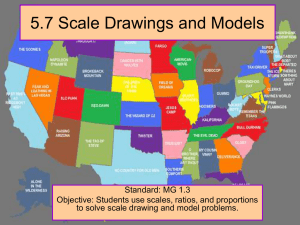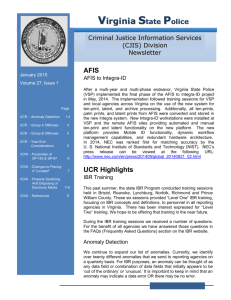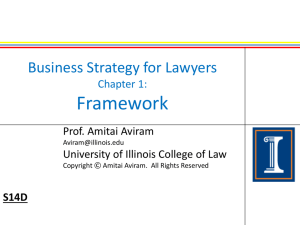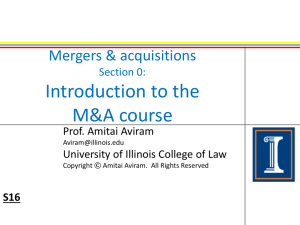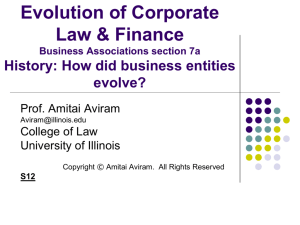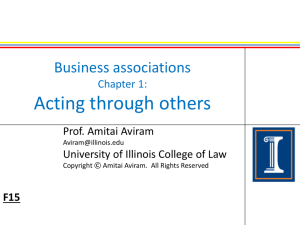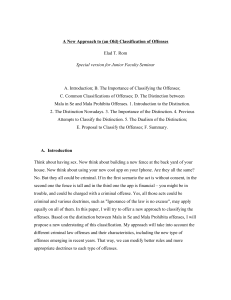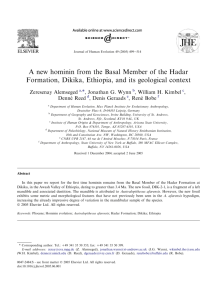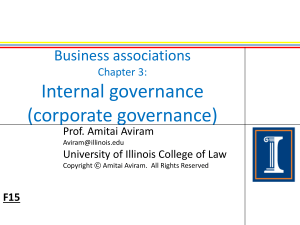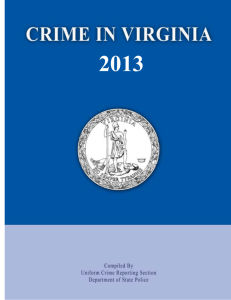Where Have all the Women Gone
advertisement
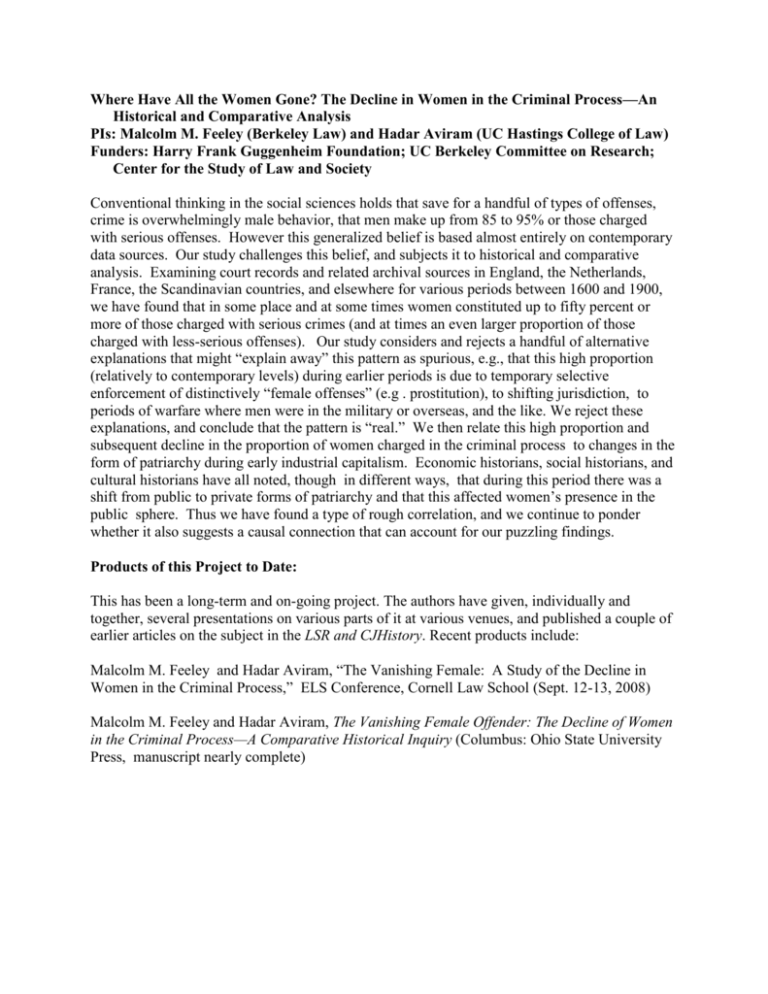
Where Have All the Women Gone? The Decline in Women in the Criminal Process—An Historical and Comparative Analysis PIs: Malcolm M. Feeley (Berkeley Law) and Hadar Aviram (UC Hastings College of Law) Funders: Harry Frank Guggenheim Foundation; UC Berkeley Committee on Research; Center for the Study of Law and Society Conventional thinking in the social sciences holds that save for a handful of types of offenses, crime is overwhelmingly male behavior, that men make up from 85 to 95% or those charged with serious offenses. However this generalized belief is based almost entirely on contemporary data sources. Our study challenges this belief, and subjects it to historical and comparative analysis. Examining court records and related archival sources in England, the Netherlands, France, the Scandinavian countries, and elsewhere for various periods between 1600 and 1900, we have found that in some place and at some times women constituted up to fifty percent or more of those charged with serious crimes (and at times an even larger proportion of those charged with less-serious offenses). Our study considers and rejects a handful of alternative explanations that might “explain away” this pattern as spurious, e.g., that this high proportion (relatively to contemporary levels) during earlier periods is due to temporary selective enforcement of distinctively “female offenses” (e.g . prostitution), to shifting jurisdiction, to periods of warfare where men were in the military or overseas, and the like. We reject these explanations, and conclude that the pattern is “real.” We then relate this high proportion and subsequent decline in the proportion of women charged in the criminal process to changes in the form of patriarchy during early industrial capitalism. Economic historians, social historians, and cultural historians have all noted, though in different ways, that during this period there was a shift from public to private forms of patriarchy and that this affected women’s presence in the public sphere. Thus we have found a type of rough correlation, and we continue to ponder whether it also suggests a causal connection that can account for our puzzling findings. Products of this Project to Date: This has been a long-term and on-going project. The authors have given, individually and together, several presentations on various parts of it at various venues, and published a couple of earlier articles on the subject in the LSR and CJHistory. Recent products include: Malcolm M. Feeley and Hadar Aviram, “The Vanishing Female: A Study of the Decline in Women in the Criminal Process,” ELS Conference, Cornell Law School (Sept. 12-13, 2008) Malcolm M. Feeley and Hadar Aviram, The Vanishing Female Offender: The Decline of Women in the Criminal Process—A Comparative Historical Inquiry (Columbus: Ohio State University Press, manuscript nearly complete)







